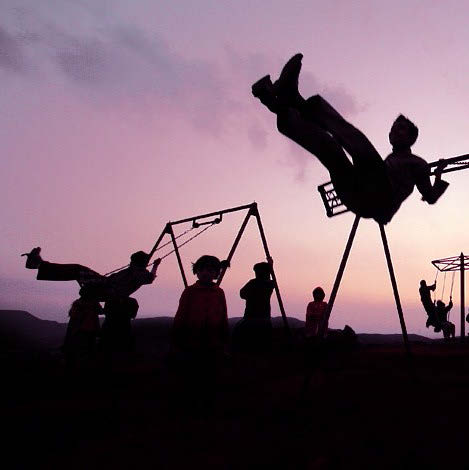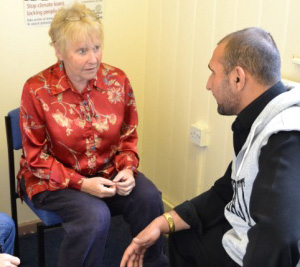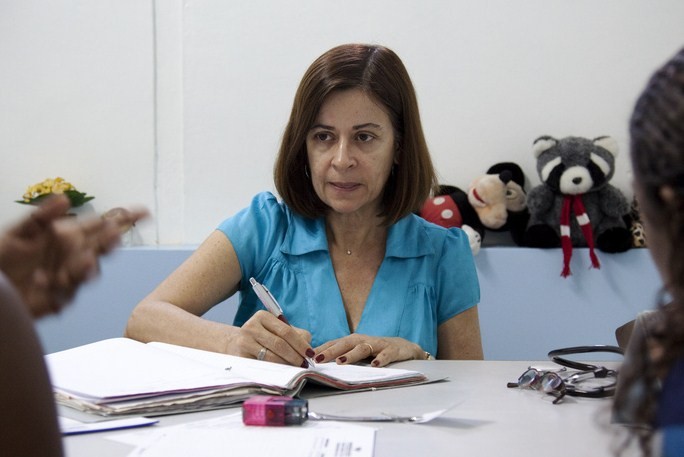Introduction
 As you have read in earlier units, any concerns about the safety of children and families should be handled within the policies and procedures of your own organisation.
As you have read in earlier units, any concerns about the safety of children and families should be handled within the policies and procedures of your own organisation.
It is your responsibility to ensure you are familiar with these policies and know who the designated safeguarding and/or child protection person is.
Within the first four units in this section we have offered a broad overview of safeguarding issues and some of the specific concerns related to migrant communities.
The unit will help you to understand how to react and respond if an issue is raised.
Please note that the appropriate use of interpreters is especially relevant here.
Reacting to disclosure
 If someone starts to tell you about something that might indicate potential abuse, listen but do not ask for detail.
If someone starts to tell you about something that might indicate potential abuse, listen but do not ask for detail.
Let them know as soon as possible that if they tell you something that might cause concern you will have to tell someone else, usually the designated safeguarding or Child Protection person in your organisation
Under no circumstances agree to keep it a secret. Remember - all forms of abuse thrive on secrecy.
Do not ask probing questions. Doing this may undermine any investigation by Police or Children and Family Services. The Police, Child and Family Services and the NSPCC are the only organisations that have legal powers to investigate allegations of child abuse.
When listening, try to make sense of what you are being told.
- Are they currently being harmed?
- Are they currently at risk?
- Is anyone else at risk?
- Do they need medical attention?
- What are their overall needs?
- What is important to them?
The 3 'R's: receive, reassure & respond
The 3 ‘R’s is a useful guide whether dealing with a child, young person or adult.
However, you must follow your organisations Safeguarding and Child Protection Policies and procedures even if they differ from this.
Click on the buttons below to view the details.
Listen. Do not look shocked or disbelieving
Do not be judgemental
Take what they are saying seriously and believe them
Don’t make the person feel bad, for example by saying things like “You should have told me earlier”
Stay calm. Tell them that they have done the right thing in telling you
Acknowledge how hard it must have been to tell you
Tell them that they are not to blame
Empathise – but don’t tell them how they should be feeling
Don’t promise confidentiality – explain that only those that need to know will be told (i.e. the designated person for child protection/safeguarding)
Be honest about what you can and can’t do
Don’t interrogate – let them tell you as far as possible
Don’t ask probing questions – it’s not your job to find out “who, where, when?” etc
Refer your concern on to your organisation’s designated child protection/safeguarding officer – in line with your child protection/safeguarding vulnerable adults policy and procedure
Record the date and time and any information given to you; always use the words said to you
Never interpret what was said and put it in your own words (this information could be used as evidence)
Make a note of any injuries you have seen or been shown; this is very important as bruises, cuts, marks, etc. tend to heal, and this could be used as evidence
Record what you did next and with whom you shared the information – ensure that all this is in line with your organisation’s policies and procedures
Sign and date everything that you record
Don’t criticise or judge the abuser – the person may have feelings for him or her
Remember abuse often happens by someone known and trusted by the person
Try to follow things through yourself so they don’t need to repeat their story to other staff – again, only if this is in line with your safeguarding or child protection policy and procedure
Explain what will happen next – for example, the designated person will be informed, and they may want to speak to the person further; if it is safe, the non-abusing parent or carer might also be informed (but always take great care where there is domestic abuse) – the police and social services might also be informed
Get support for yourself; it can be distressing dealing with disclosure
Adapted from ‘Heartstrings’
(Cheshire Safeguarding Children in Education Team)
Getting it right for your organisation
- Make sure you are working in line with your organisation’s policies and procedures. They may differ from what is written above. If in doubt speak to your designated Safeguarding or Child Protection Officer, local Child and Family Services or the NSPCC.
- Familiarise yourself with your local procedures on safeguarding children and young people. This will include a section on unaccompanied minors/asylum seeking children. Multi-agency guidance is usually held by local Safeguarding Children Boards.
- Familiarise yourself with your local procedures on safeguarding vulnerable adults. Guidance on recognising and responding to safeguarding issues linked to vulnerable adults will be held by your local Safeguarding Adults Board.
- It is essential that you access and understand the local guidance and procedures. It is best to do this on-line. This means that you will always be reading the most up-to-date policy or protocol. There will also be current, local phone numbers which you can use to report your concerns.
- If you are not sure of where to find your procedures then carry out a simple on-line search. Search for the name of your town/city with the words safeguarding children board (e.g. Bristol safeguarding children board) or safeguarding adults board (e.g. Manchester safeguarding adults board).
Module 7 Unit 5 Questions
Q1. You should not look shocked or upset if a child discloses abuse because it may not be true
TRUE
FALSE
Q2. If a child is very distressed you should let them stop the conversation.
TRUE
FALSE
Q3. You should sign and date anything you write in case someone accuses you of lying
TRUE
FALSE
Q4. If a child says he will only tell you if you keep it a secret you should agree
TRUE
FALSE
Q5. You should clarify the situation but should not ask probing questions or investigate further
TRUE
FALSE
Your local safeguarding children and adults boards will provide you with specific procedures of action to take if you are concerned about a child or adult.
Most provide a flowchart on their website detailing those actions, timelines and contact numbers.
Summary
 At the end of this unit you should feel more confident to react appropriately to any disclosure of abuse by adults and children.
At the end of this unit you should feel more confident to react appropriately to any disclosure of abuse by adults and children.- You should be aware of the importance of securing an appropriate professional interpreter if necessary to ensure that you are able to respond to and understand the disclosure.
- You should also be clear on the importance of familiarising yourself with your organisational policy and ensuring you work within this at all times.
Last word...
The aim of this training has been to increase understanding and confidence of health professionals to identify safeguarding issues within families from migrant communities.
It does not aim to create experts, but to give you useful awareness, tools and signposting to strengthen your working practices with migrants.
In this module, you have covered the following: Safeguarding and Vulnerability, Being Healthy, Staying Safe, Living Well and the Three ‘R’s: Receive, Reassure, Respond.
Again, it is important to stress that you should familiarise yourself with the most updated version of your local safeguarding policies and procedures.
Further signposting can be found in the resource section.
